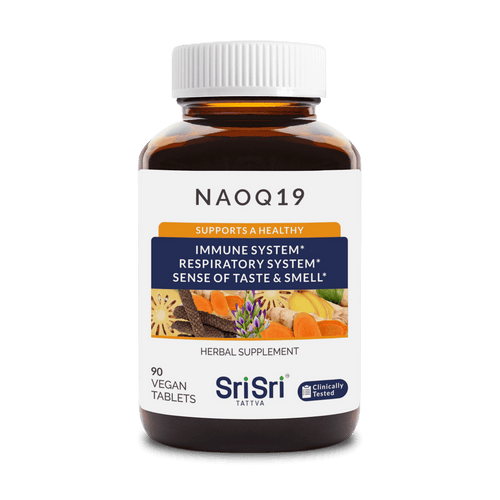What is Pitta dosha?
Are you someone who is ambitious, confident, passionate, sharp and prone to anger, with a steady digestion? Chances are you are a pitta dominant person.
In traditional Ayurvedic medicine, Pitta dosha is one of the three fundamental bio-energies or doshas that are believed to govern the various functions and life processes of the human body and mind. Doshas combine to give us our unique physical and mental constitutions. Pitta relates to the elements of fire and water and is responsible for regulating our metabolic processes and digestion.
Pitta dosha is responsible specifically for metabolism. It is related to blood, eyes, skin and the middle part of the body including the liver, stomach, spleen, small intestine and gallbladder.
Pitta also has five sub-types
Sadhaka pitta is associated with intellect and memory and drives the transformation of words into knowledge.
Alochaka pitta deals with perception from the visual senses to the mind and drives creativity and intuition.
Pachaka pitta mainly deals with digestion and assimilation of food and regulation of body temperature.
Ranjaka pitta is to do with blood formation
Bhrajaka pitta gives your skin the much needed glow and regulates the temperature and color of various parts of your body.
Pitta personality
People with a dominant Pitta dosha personality are typically characterized as being ambitious, confident, and passionate, with a sharp intellect and strong digestive system. However, when there is a Pitta imbalance, it can lead to a range of physical and emotional symptoms, including indigestion, skin rashes, inflammation, irritability, and anger.
In order to keep Pitta in balance, Ayurvedic practitioners recommend a range of lifestyle changes and tweaks in our diet, including eating cooling foods, avoiding spicy or acidic foods, practicing relaxation techniques like yoga or meditation, and getting plenty of rest and exercise.
By maintaining a healthy balance of Pitta dosha, individuals can improve their overall health, enhance the good pitta qualities, have good energy and wellbeing, and achieve greater harmony and balance in their lives.
Characteristics of pitta body type
People with a pitta body type exhibit some distinctive characteristics that set them apart from those with other body types, like they are generally medium built, with strong muscles and a moderate amount of body fat. They tend to be warm-blooded, with a high metabolism that helps them to digest food quickly and efficiently. Pitta-dominant individuals also tend to be ambitious, driven, and goal-oriented, with a natural leadership ability that makes them well-suited to positions of authority. They are also usually highly organized and detail-oriented, with a sharp intellect and a strong sense of focus.
In terms of their physical appearance, pitta-dominant individuals often have a ruddy complexion, with reddish or copper-toned skin and hair. They may also have freckles or moles on their skin. They tend to have a strong appetite and a love of spicy foods, which can sometimes lead to digestive problems if they overindulge. Pitta individuals may also be prone to skin conditions like acne, rashes, or eczema, as well as inflammation in the body.
Emotionally, pitta individuals tend to be intense and passionate, with a tendency to become easily frustrated or irritated if things don't go according to plan. They can be competitive and perfectionistic, which can sometimes cause them to push themselves too hard and neglect their own health and well-being. However, when in balance, pitta individuals are also known for their warmth, generosity, and sense of humor.
Possible Reasons for High Pitta Levels
Poor or high caffeine diet; stress; overworking; poor sleep or irregular sleep cycles can all vitiate the pitta dosha.
One of the main reasons for high pitta is an unhealthy diet. Consuming too much spicy, oily, and fried food can increase the pitta levels in the body. A diet that is high in caffeine, alcohol, and processed food can also contribute to an increase in pitta. Another factor that can cause high pitta is overeating. When we eat more than our body can digest, it puts a strain on our digestive system, leading to an increase in pitta.
Stress and emotional factors can also cause high pitta. When we are stressed, our body releases cortisol, a hormone that can increase pitta levels. Negative emotions such as anger, jealousy, and frustration can also lead to an increase in pitta. Lack of sleep and irregular sleeping patterns contribute further to push up pitta levels in the body.
Environmental factors such as exposure to excessive heat and sunlight can also cause an increase in pitta. Living in a hot and humid climate can lead to higher pitta levels in the body. Excessive physical activity and exercise can also increase pitta levels, particularly if it is done during the hot part of the day.
How To Balance Pitta Dosha
In order to bring a balance to our pitta dosha, it is essential to make lifestyle changes and follow a proper diet.
1. Right foods
Firstly, individuals with a pitta imbalance should avoid spicy, sour, and salty foods, as they can increase the fire element in the body, leading to inflammation and acidity. Instead, they should opt for cooling foods like cucumber, watermelon, and coconut water.
2. Regular exercise
Secondly, regular exercise is crucial, but it is important to avoid excessive heat and sun exposure, as these can aggravate pitta dosha.
3. Yoga and meditation
Yoga and meditation are beneficial in calming the mind and reducing stress, which can help balance pitta dosha.
4. Sleep
Additionally, getting enough sleep and maintaining a regular sleep schedule can help reduce stress and prevent pitta imbalances.
5. Avoid aggressive situations
It is essential to avoid situations that can lead to anger and frustration, as these emotions can increase pitta dosha. Instead, individuals should practice self-awareness to maintain a calm and balanced state of mind.
6. Eat at regular intervals
Pitta people should keep eating in small portions from time to time. Pitta persons can get irritated and frustrated if they go without food for too long, and so they can do well by avoiding total fasting rituals. If pitta people have an early dinner, they will likely feel hungry quickly. If so, have buttermilk or something light and easy to digest.
7. Clarified butter
Have some ghee in a glass of warm milk before going to bed.
8. Foot massage
For pitta people to sleep better, they can get a foot massage therapy with clarified butter before calling it a day. The bedroom should be well-ventilated and cool.
9. Essential oils
Pitta people can go for ayurvedic therapies tailored to their bodies that use calming essential oils like sandalwood, chamomile, rose, fennel, or peppermint. Among therapies, a head massage using gooseberry or bhringraj-based oils can go a long way in calming excess pitta dosha.
Pitta diet for Balancing pitta dosha
The first step in balancing pitta dosha through diet is to avoid spicy, sour, and salty foods. Pitta dosha is hot and sharp, so it needs to be balanced by consuming foods that are the opposite that is cooling and soothing. Fresh, organic, and seasonal fruits and vegetables are ideal for balancing pitta dosha. Some examples of cooling fruits are sweet apples, ripe pears, sweet cherries, mangoes, pomegranates, plums, raisins, apples, avocadoes, coconuts, and juicy watermelons. Vegetables such as cucumbers, zucchini, and leafy greens are also beneficial.
Herbal teas for pitta types are mint or licorice.
In addition to fruits and vegetables, it is important to consume whole grains that are easy to digest, such as rice, quinoa, and barley. These grains provide nourishment without creating excess heat in the body. It is also recommended to consume legumes and beans, such as mung beans and tofu, as they are high in protein and have a cooling effect on the body.
Pitta individuals should also incorporate healthy fats, such as ghee and coconut oil, into their diet. These fats help to lubricate the body and prevent dryness, which is a common symptom of pitta imbalance. It is also essential to stay hydrated by drinking plenty of water, coconut water, and herbal teas.
Lastly, it is important to eat mindfully and avoid overeating or eating too quickly. Eating slowly and mindfully allows the body to properly digest food and reduces the risk of creating excess heat in the body.





